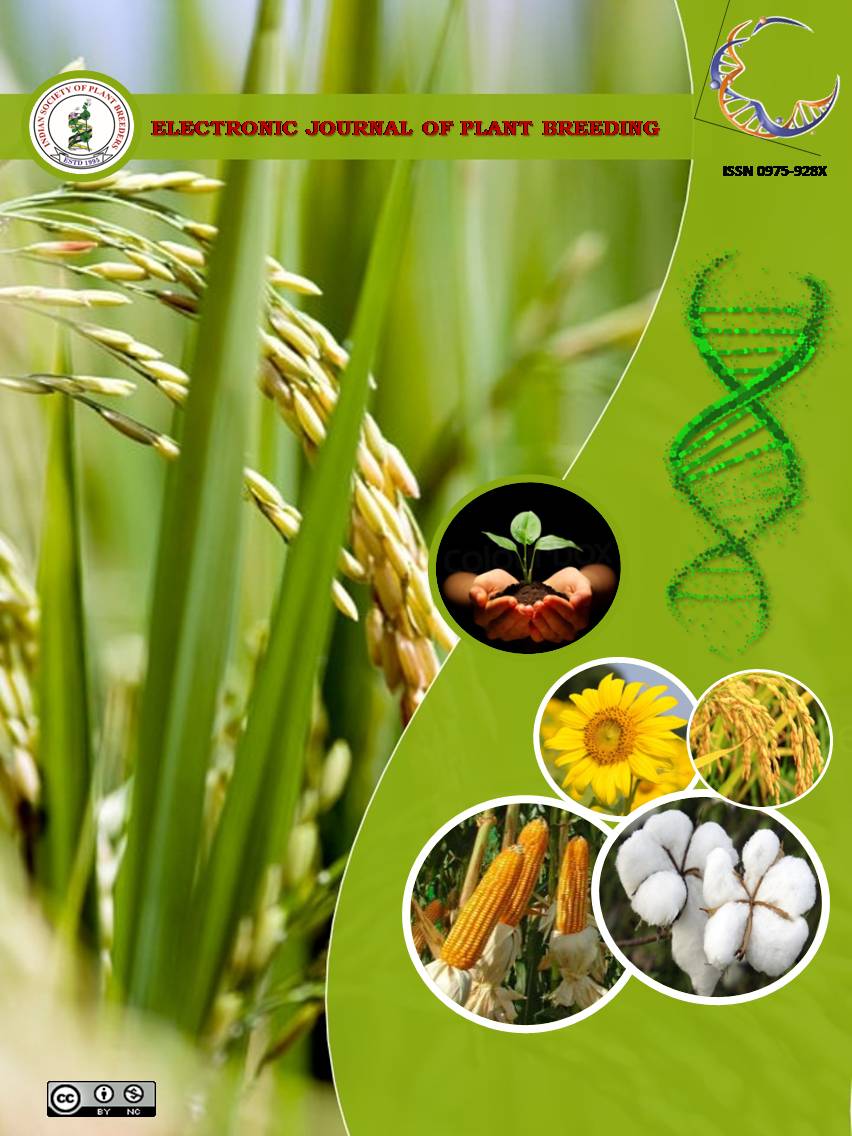Correlation and path analysis studies on yield and yield components in brinjal (Solanum melongena L.)
Abstract
An experiment on correlation and path analysis involving thirty F1 and six parents of brinjal (Solanum melongena L.) was carried during rabi, 2018 at Horticultural College and Research Institute, Tamil Nadu Agricultural University, Coimbatore. The genotypic correlation coefficient was higher in magnitude than thecorresponding phenotypic correlation coefficient for most of the characters. The fruit yield per plant had exhibited ahighly significant and positive correlation with fruit length (0.837) and the number of fruits per plant (0.716). The genetic improvement of fruit yield thus can be obtained by selection for these yield components. Path coefficient analysis revealed that the characters viz., the number of fruits per plant (0.962), days to first harvest (0.922) and fruit girth (0.616) had a high positive direct effect on fruit yield per plant. Thus, the fruit yield per plant can be improved by making the selection of these traits in the yield improvement programme.

